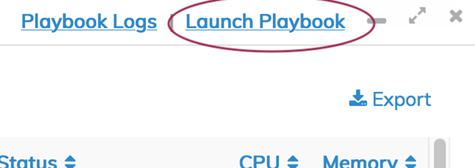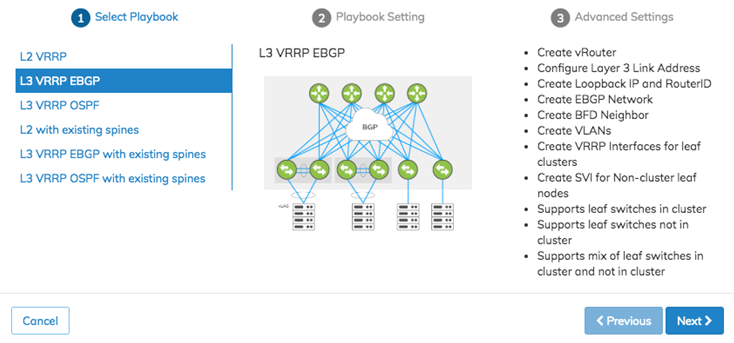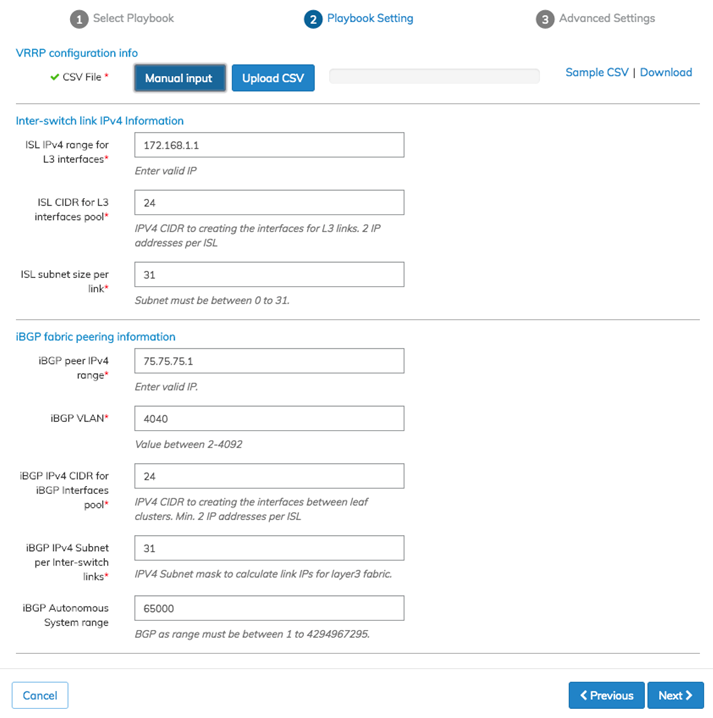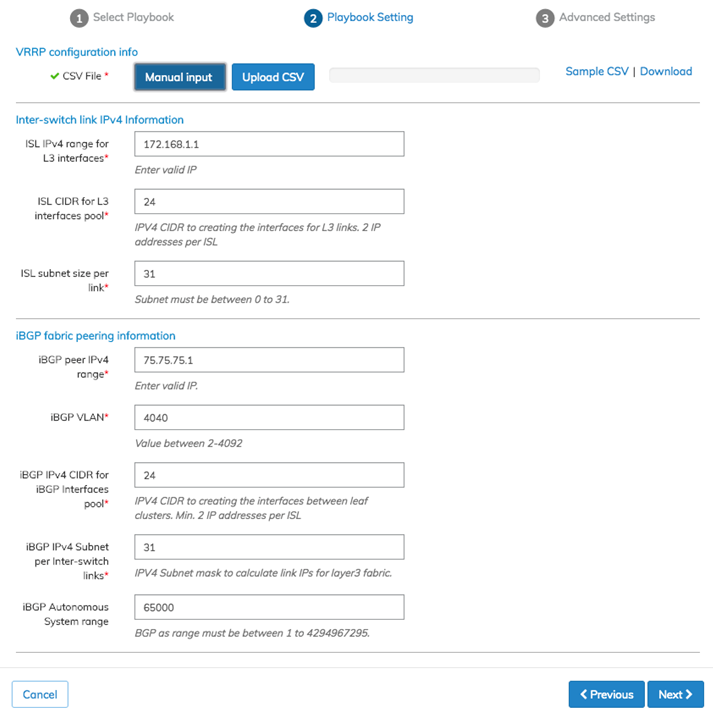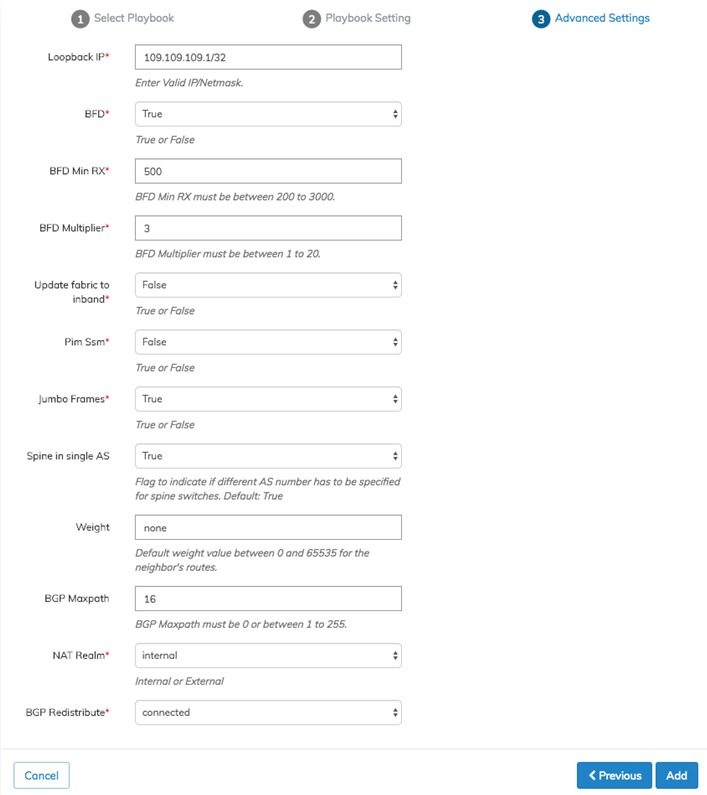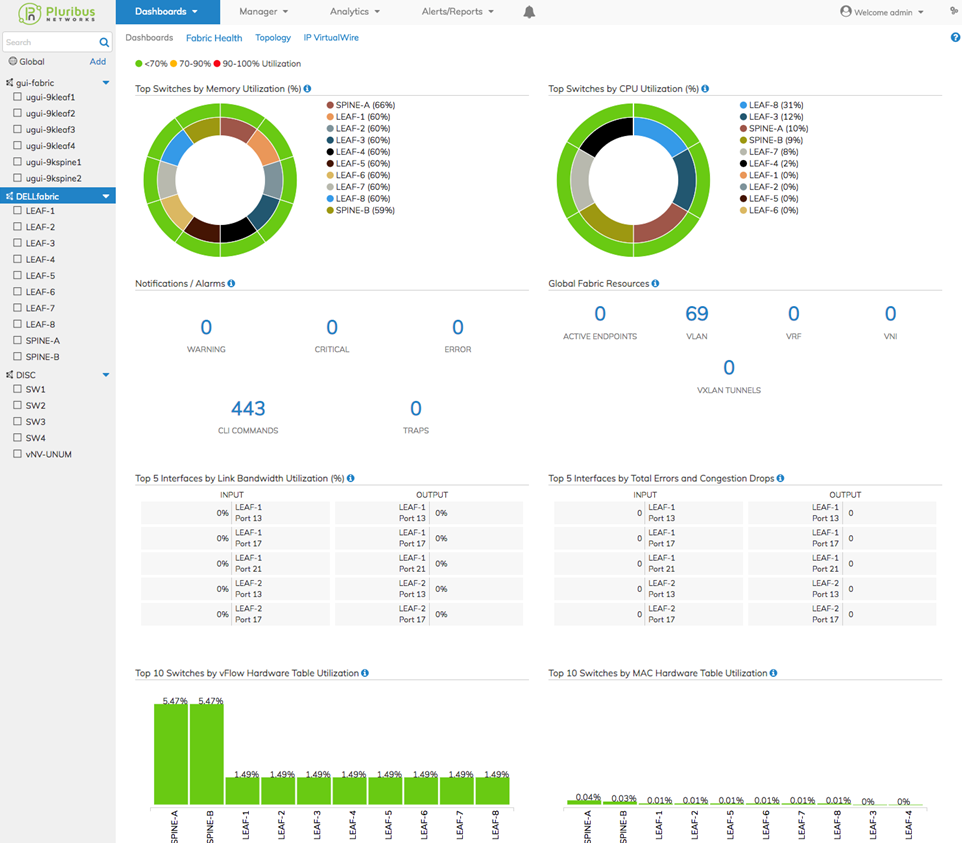
Playbook Example – L3 BGP VRRP with Netvisor Spines
Playbook Example – L3 BGP VRRP with Netvisor Spines
In this example, we’ll build a fabric with Layer-3 at both the leafs and spines and deploy VRRP between two leafs in a cluster. The spines will be running NetVisor OS.
|
1)After the initial fabric setup has been initiated or completed, click on the blue Launch Playbook link on the right of the screen. Launch Playbook |
|
|
2)From the popup menu choose the L3 VRRP EBGP playbook from the left menu and click on the blue Next button. L3 VRRP EBGP Playbook |
|
|
3)This opens the Playbook setting page. We’ll be using the default Inter-switch Link and iBGP fabric peering information, but we do need to configure a VLAN to enable Day-0 connectivity. Under the VRRP configuration info section, click on the blue Manual Input button. VRRP Configuration |
|
4)In the CSV file screen, enter the following information:
|
VLAN ID |
= |
10 |
|
VRRP IP |
= |
10.10.10.1/24 |
This is the virtual IP address of what will be our VLAN gateway.
|
Switch Name (first) |
= |
LEAF-1 |
|
Switch Name (Second) |
= |
LEAF-2 |
These switches will be the master/slave for VRRP.
|
VRRP ID |
= |
18 |
|
Switch Name (Third) |
= |
LEAF-1 |
This field designates which switch will be the master for VRRP.

Finally click on the blue Add+ button.
|
5)From the Playbook setting screen, click on the blue Next button. VRRP Configuration |
|
|
6)From the playbook Advanced Settings window, click on the blue Add button to accept the default advanced settings. Advanced Settings |
|
|
7)At this point NetVisor UNUM automation creates the BGP fabric. Note the progress bars in the Details pane. NetVisor UNUM measures progress by the task and provides a rough time estimate. These indicators can vary based on the switch models chosen for the fabric but can be a rough indicator of how long the fabric will need to complete. Fabric Provisioning |
|
Tip: BGP fabrics are more complex than simple Layer-2 fabrics and can take longer to configure depending on the configuration choices. In our ten switch fabric, given the switches we are using, we can expect the playbook configuration to last for around 45-50 minutes.
|
8)Our L3 VRRP BGP fabric has been created and is ready for use. Adding host ports to VLAN 10 and configuring host IPs on any of the leaf switches, enables the communication between hosts. Fabric Provisioning Complete |
|
|
9)It’s always a good idea to check the Fabric Health Dashboard on a new fabric to review any potential issues. Click on Dashboards in the top menu and select Fabric Health. Fabric Health |
|
Everything is green and good to go!
Now add host ports to VLAN 10, and the servers can communicate with each other.
You may have noticed that we only provisioned one VLAN, but NetVisor UNUM is reporting 69. As NetVisor UNUM builds a fabric, some VLANs are necessary for internal use, such as for vRouter Interfaces, and these also appear in the Global Fabric Resources widget. In these cases, NetVisor UNUM assigns the internal VLAN starting with VLAN 4092 and subtracting by one as needed (4092, 4091, 4090…).

